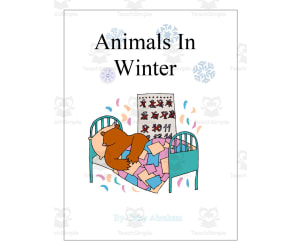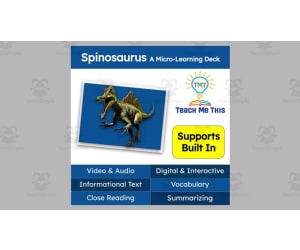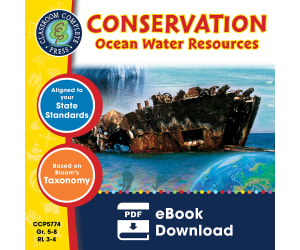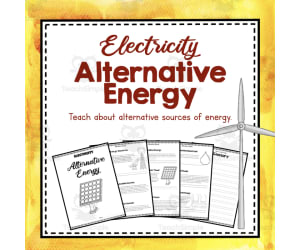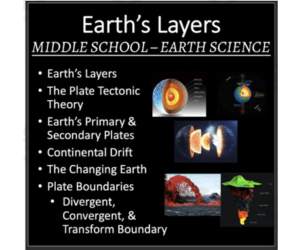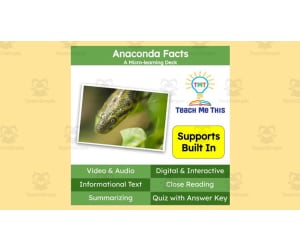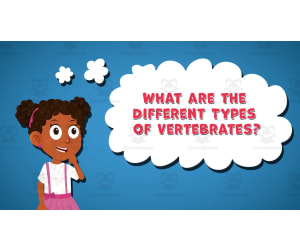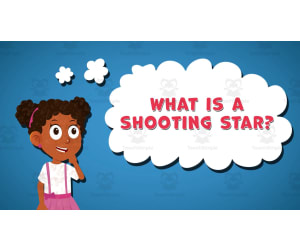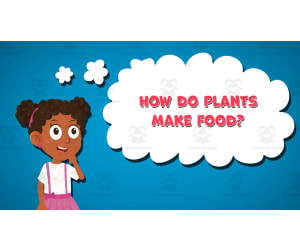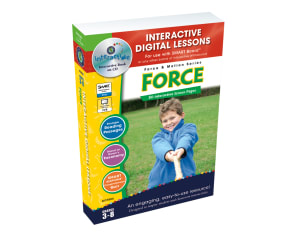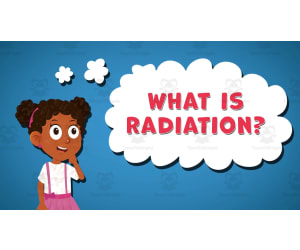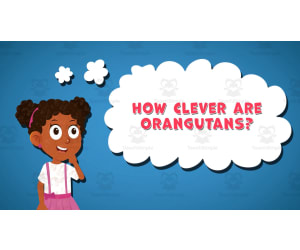4,751 products added recently
Page 77 - Science Lesson Plan Template
Enhance your science instruction with a flexible lesson plan template designed for educators. This tool helps you structure objectives, materials, procedures, and assessments efficiently. Use it to create organized and impactful science lessons that cater to your students' needs.
Animals in Winter Curriculum Pack
ELA, Math, Early Math, Language Development, Vocabulary, Science, Basic Science, Kindergarten, Lesson Plans, Teacher Tools
If your students are studying hibernation or are about to begin an animal unit, I have just the resource to provide you with everything you need and more! This is an Animals in Winter Curriculum Pack complete with an abundance of printable resources and engaging activities for students to complete. This curriculum was designed for your preschool students. The curriculum goal is to present the concept of hibernation, and how various animals live and survive during the winter and adapt to seasonal changes. The vocabulary that students will focus on is hibernation, cave, migrate, South, climate, Artic, dormant, mammal, and torpor. This curriculum will come with a letter of the week (B) and a color of the week (gray). This curriculum pack includes: --Sensory Table Ideas --Art Activities --Cooking Experience --Community Time --Math Activities --Home/School Connection Ideas --Science Table Enrichments --Science Concepts/Activities --Prop Box Ideas/Dramatic Play Enrichments --Movement and Motor --Playground/Walk Activities --Transition/Waiting Ideas --Block Area Enrichments --Flannel Board --Teacher Made Enrichment Ideas --Field Trip Ideas --Supplemental Learning Ideas/Activities At the start of this pack, you will receive a list of supplies needed for activities and projects. The worksheets, activities, and tasks included in this pack are intended to be completed in a variety of formats – whole group, small group, and independent work. I hope you enjoy! I can be contacted for questions and concerns at childcarediva@aol.com .
Author Learning Foundations
Tags Animals In Winter, Reading Curriculum, Math Curriculum, Language Arts, Sensory Tables, Field Trip Ideas, Hibernation, Vocabulary, Dramatic Play
Spinosaurus | Interactive Science Lesson | Micro-Learning Deck
Science, Life Sciences, Animals, Grade 6, 7, 8, 9, Teacher Tools, Lesson Plans
Spinosaurus | Interactive Lesson for Science Educators Transport students back in time with this interactive Spinosaurus lesson for middle school science classes. This digital slideshow dives into the life and anatomy of the Spinosaurus, bringing this prehistoric creature to life. Educators can implement this resource in a variety of ways - use it to introduce a new unit on dinosaurs, facilitate a small group lesson on ancient animals, or assign it as an at-home learning activity. The deck includes informative video footage, reading passages with audio for diverse learners, close reading questions, and writing prompts to boost engagement and comprehension. With vivid images alongside informal assessments, this Spinosaurus resource will captivate students' curiosity about the past.
Author Teach Me This
Tags Spinosaurus, Interactive, Science, Reading Passage, Vocabulary
Conservation: Ocean Water Resources Gr. 5-8
Science, Earth and Environmental Sciences, Environmental Science, Grade 5, 6, 7, 8, Teacher Tools, Lesson Plans
Conservation: Ocean Water Resources Gr. 5-8 Conservation: Ocean Water Resources Gr. 5-8 is a dynamic teaching resource that delves into the critical topic of ocean conservation, specifically designed for grades 5 through 8. Given that Earth's oceans cover approximately 71% of its surface and account for 97% of all its water, maintaining their welfare is intrinsically linked to our planet's overall health. Diverse Application Educators can use this resource in various ways—using it as a whole group study or dividing students into small groups to promote collaborative learning and extensive discussion on the matter or assigning related tasks as homework assignments for personal pondering. Creative Engagement The included lessons inspires engaging activities that provide a comprehensive understanding. An opportunity exists for students to design their own board games symbolizing climate change implications on ocean waters, deepening their comprehension further. The Real World Impact The guide illustrates how variations in ocean currents due to climate change could disrupt farming and fishing—a real-world association encouraging thoughtful reflection amongst learners about how conservation directly affects livelihoods. A Case Study Example Included is an intriguing case study taking students into the scene of a shipping accident where multiple cargo containers were lost at sea during intense storms—a vivid representation of what happens far from our shores yet greatly impacts us close at home. Foster Experiential Learning with 'Saltwater' Educators can assist students in creating 'saltwater' representing Earth's oceans—an activity tailored not just towards gaining insights but also cultivating curiosity by adding an experiential element transporting them to the oceans! Aiming to address Bloom’s Taxonomy & STEAM initiatives while ensuring high student engagement makes this resource indispensable for teachers hoping to foster environmental awareness among young learners. Included Assets: Comprehensive Tools For Learning Bullet Point 1: Hands-on activities Bullet Point 2: Interactive graphic organizers, word search puzzles, crosswords Bullet Point 3: Standard comprehension quizzes with answer keys—ensuring a complete learning experience on oceans! All items included are PDF files providing easy referencing.
Author Classroom Complete Press
Tags PDF
Electricity Unit Study | Alternative Energy
Science, Physics, Grade 3, 4, 5, Lesson Plans, Teacher Tools
Electricity Unit Study | Alternative Energy An engrossing and comprehensive teaching resource, the 'Electricity Unit Study | Alternative Energy' is perfect for Grade 3 to 5 educators. Tailored specifically to enhance an Electricity Unit Study, this detailed guide dives deep into the world of alternative energy - a hot topic in today's society. Its ability to provide students with ample opportunities to both learn about alternative energy as well as apply their newfound knowledge sets it apart. Booklet Content: Captivating descriptions of clean energy resources. Invaluable insights into nonrenewable and renewable sources. A look at solar and wind power. An exploration of biomass and biodiesel fuel innovations. A detailed grasp on tidal and hydro power practices. A firsthand view at geothermal power potentialities. Different Styles: This resource offers booklets in four different styles, allowing teachers full flexibility in implementation. These are ideal for whole group instruction or small group work. Promoting Hands-on Learning: This guide promotes hands-on learning experiences with engaging science experiments that relate directly to each lesson taught; stimulating exploration among young learners. Do bear in mind that planning ahead for experiment materials is crucial The booklets can be used as references when writing reports.(Encourages Critical Thinking!) -or-, between sentences. Add a bullet list item (Changed placement) . Change a sentence or two around: Find patterns or recurring phrases ? Oral presentations to foster team building skills. Final Take: The 'Electricity Unit Study | Alternative Energy' having twenty-three content-rich pages comes in an incredibly easy-to-use PDF file format. This indispensable tool for in-class instruction, homework assignments, and integrated small group activities can enhance your Physical Science teaching capacity. Start incorporating this versatile resource into your educational initiatives today!
Author Simply Schoolgirl
Tags Electricity, Alternative Energy, Renewable Sources, Science Experiments, Teaching Resource
I WONDER - Can You Live With One Kidney | Animated Video Lesson
Science, Human Body, Life Sciences, Biology, Grade 3, 4, 5, 6, 7, 8, 9, Lesson Plans, Teacher Tools
Video Overview The human body is full of fascinating wonders to learn. This video is created to help the students recognize the anatomy and the job of the human body. I WONDER - Can You Live With One Kidney | Animated Video Lesson Every part and organ in our human body is vital so let's see how important they are. Have you ever imagined how we look like if we didn't have a skeleton? Did you know that because we have our amazing muscles we can stand! Do you know how many teeth do we have? Have you ever wondered about the food journey inside our body? Can you name all the glands in our body? Why do we have skin? Our nervous system is really good at sending signals. Can you tell us more about it? Are you really good at Mathematics, painting, or any other thing? You should really thank your brain about it! The famous five senses are really doing a great work? Can you explain how every sense works? I WONDER - Can You Live With One Kidney | Animated Video Lesson The video is perfect for encouraging the researching skills for the students, while learning more about our fantastic human body. I WONDER - Can You Live With One Kidney | Animated Video Lesson This friendly designed video is suitable for students at school, homeschooling, and as a group activity. Format Available in MP4 format.
Author Educational Voice
Tags Can You Live With One Kidney, Can You Live With One Kidney Video, Kidney, Kidneys, Kidney Facts, Kidney Facts For Kids, Kidney Video, Kidney Video For Kids, Human Body, Human Body Facts
Energy: Light Energy
Science, Physics, Common Core, Grade 5, 6, 7, 8, Teacher Tools, Lesson Plans
Energy: Light Energy Light Energy is an exceptional teaching resource, uniquely tailored to help students grasp the concept of energy in a more comprehensive and compelling manner. It skillfully simplifies the complex world of energy by subdividing it into its constituent parts like mechanical, thermal, sound waveforms, and light energy subsets. This learning material is tailor-made for grade 5 to 8 students with an emphasis on science - especially physics. A Detailed Tool For Better Comprehension: This resource equips learners with meticulously curated reading passages written in simple language along with engaging student activities leading to a balanced learning interface that educates and tests comprehension levels concurrently. Light Energy, one component from the complete lesson plan titled "Energy", includes mini color posters conducive for whole-class or small group learning scenarios either as teaching aids or remedial reinforcements. This exemplary tool promotes independent study habits making it excellent as homework assignments while also being beneficial for teachers following Bloom's Taxonomy principles for tracking student progress effectively. The lesson plan aligns flawlessly with Common Core State Standards requirements indicating relevance and support towards rigorous curricula demands while ensuring STEM initiatives are met.. Easily Accessible And Ready-to-use: The easy accessibility of Light Energy in PDF file format makes this ready-to-use information straightforward for educators to incorporate into their instruction plans. It delves into potential forms of energy providing an excellent complement to broader science teaching programs aiming at promoting a flexible formative approach helping students gain mastery over crucial scientific concepts at these key educational stages.
Author Classroom Complete Press
Tags PDF
Earth's Layers - Middle School Earth Science Lesson
Science, Earth and Environmental Sciences, Earth Sciences, Environmental Science, Grade 6, 7, 8, 9, Teacher Tools, Lesson Plans
Earth's Layers - Middle School Earth Science Lesson Your lesson covers the different layers of Earth. In order, the lesson teaches about; Earth’s Layers, the Inner Core, the Outer Core, Planet Formation, Earth’s Magnetic Field, the Mantle, the Asthenosphere and Lithosphere, the Crust, and an introduction to Tectonic Plates. Your lesson includes the teacher and student version of the presentation, SIX embedded videos, an auto-graded exit ticket, and a student lesson handout so the students can record the notes on a more condensed medium. This lesson is designed to be your go-to resource, whether you're in a traditional classroom or a virtual one. With both a teacher version and a student version, it seamlessly fits into your lesson plans, making learning engaging and adaptable. Assessment made easy We've included an auto-graded Exit Ticket and a quiz with an answer key because I know you don't have an excess of time. I know you don't, because I don't and I know I'll do whatever I can to reduce my grading time. Whether you use PowerPoint or Google Slides, prefer Word or Google Docs, this lesson has you covered. This lesson comes in both Office and Google formats for your convenience. The student version of the presentation has strategically placed blanks for them to fill in as you're teaching. It keeps them active and engaged, encourages discussion, and leaves more time for those "aha" moments.
Author Teach With Fergy
Tags Earth’s Elliptical Path , Earth’s Motion Around The Sun , The Seasons , Earth’s Tilt , Earth’s Revolution , Equinox , Perihelion , Aphelion
Anaconda Facts | Interactive Science Lesson | Micro-Learning Deck
Science, Life Sciences, Animals, Grade 4, 5, 6, 7, Teacher Tools, Lesson Plans
Engage your students with this informative science lesson on anaconda facts. This digital slide deck can be used in whole or small groups to reinforce key concepts. An opening video introduces the topic and grabs attention. Students then read a passage with audio support to build comprehension of anaconda traits and habitats. A close reading activity and quick write prompt allow teachers to check for understanding and give students a chance to summarize learnings. With a mix of informal assessments , this versatile 150-slide PowerPoint keeps learners focused while covering anaconda diet, size, habitat, reproduction, and more. Use it to supplement any life science or zoology unit in grades 4-7. The multi-modal design works for visual, auditory, and kinetic learners alike.
Author Teach Me This
Tags Anaconda Facts, Interactive Science, Learning Deck, Anaconda Habitats, Adaptations
I WONDER - What Problems Does Soil Erosion Cause | Animated Video
Environmental Science, Earth and Environmental Sciences, Science, Earth Sciences, Nature & Plants, Life Sciences, Grade 6, 7, 8, 9, 10, 11, 12, Lesson Plans, Teacher Tools
Video Introduction An amazing video designed for the students to learn more about STEM. I WONDER - What Problems Does Soil Erosion Cause | Animated Video Lesson Do you like STEM subjects? what is your favorite one? Have you ever tried to plant a seed? If yes, tell us more about it. Or have you ever tried to invent something? If yes, tell us more about it. And how do you think it will help us? Have you ever seen a microorganism under a microscope? What was it? And how it looked like? Mathematics is a marvelous subject. Let' sharpen our brains and solve some equations. Do you like timetable tricks? What is your favorite one? Do you know how to code? Have you ever created an app or a game before? If yes, how was it like? I WONDER - What Problems Does Soil Erosion Cause | Animated Video Lesson The video is perfect for encouraging the researching skills for the students, while learning more about this fantastic topic. I WONDER - What Problems Does Soil Erosion Cause | Animated Video Lesson This friendly designed video is suitable for students at school, homeschooling, and as a group activity. Format Available in MP4 format.
Author Educational Voice
Tags What Problems Does Soil Erosion Cause, What Problems Does Soil Erosion Cause Video, Soil Erosion, Soil Erosion Facts, Soil Erosion Facts For Kids, Soil Erosion Video, Soil Erosion Video For Kids
I WONDER - What Are Everyday Examples Of Different States Of Matter
Science, STEM, Grade 4, 5, 6, 7, 8, 9, 10, Lesson Plans, Teacher Tools
Video Introduction An amazing video designed for the students to learn more about STEM. I WONDER - What Are Everyday Examples Of Different States Of Matter | Animated Video Lesson Do you like STEM subjects? what is your favorite one? Have you ever tried to plant a seed? If yes, tell us more about it. Or have you ever tried to invent something? If yes, tell us more about it. And how do you think it will help us? Have you ever seen a microorganism under a microscope? What was it? And how it looked like? Mathematics is a marvelous subject. Let' sharpen our brains and solve some equations. Do you like timetable tricks? What is your favorite one? Do you know how to code? Have you ever created an app or a game before? If yes, how was it like? I WONDER - What Are Everyday Examples Of Different States Of Matter | Animated Video Lesson The video is perfect for encouraging the researching skills for the students, while learning more about this fantastic topic. I WONDER - What Are Everyday Examples Of Different States Of Matter | Animated Video Lesson This friendly designed video is suitable for students at school, homeschooling, and as a group activity. Format Available in MP4 format.
Author Educational Voice
Tags What Are Everyday Examples Of Different States Of Matter, What Are Everyday Examples Of Different States Of Matter Video, Different States Of Matter, Different States Of Matter Facts, Different States Of Matter Video
I WONDER - What Materials Do Trees Give Us | Animated Video Lesson
Nature & Plants, Life Sciences, Science, Environmental Science, Earth and Environmental Sciences, Earth Sciences, Biology, Grade 1, 2, 3, 4, 5, 6, 7, 8, Lesson Plans, Teacher Tools
Video Introduction An amazing video designed for the students to learn more about STEM. I WONDER - What Materials Do Trees Give Us | Animated Video Lesson Do you like STEM subjects? what is your favorite one? Have you ever tried to plant a seed? If yes, tell us more about it. Or have you ever tried to invent something? If yes, tell us more about it. And how do you think it will help us? Have you ever seen a microorganism under a microscope? What was it? And how it looked like? Mathematics is a marvelous subject. Let' sharpen our brains and solve some equations. Do you like timetable tricks? What is your favorite one? Do you know how to code? Have you ever created an app or a game before? If yes, how was it like? I WONDER - What Materials Do Trees Give Us | Animated Video Lesson The video is perfect for encouraging the researching skills for the students, while learning more about this fantastic topic. I WONDER - What Materials Do Trees Give Us | Animated Video Lesson This friendly designed video is suitable for students at school, homeschooling, and as a group activity. Format Available in MP4 format.
Author Educational Voice
Tags What Materials Do Trees Give Us, What Materials Do Trees Give Us Video, Trees, Trees Facts, Trees Facts For Kids, Trees Video, Trees Video For Kids, Trees Materials, Trees Materials Video For Kids
I WONDER - What Are The Different Types Of Vertebrates
STEM, Biology, Life Sciences, Science, Animals, Grade 1, 2, 3, 4, 5, 6, 7, 8, Lesson Plans, Teacher Tools
Video Introduction Animal kingdoms are full of fascinating wonders to learn. This video is designed for the students to learn more about animals in different countries. I WONDER - What Are The Different Types Of Vertebrates | Animated Video Lesson Do you like animals? what is your favorite one? Do you own a pet? If yes, tell us more about it, like what its name? And what do you like most about it? What are the animal kingdoms? Can you write down the characteristics of each animal class like mammals, birds, reptiles, amphibian, fish and mollusks. Do you know that some animals can sing, can you name any of them? What is the largest and the smallest mammal in the world? What is the largest and the smallest bird in the world? What is the largest and the smallest fish in the world? I WONDER - What Are The Different Types Of Vertebrates | Animated Video Lesson The video is perfect for encouraging the researching skills for the students, while learning more about these fantastic animals. I WONDER - What Are The Different Types Of Vertebrates | Animated Video Lesson This friendly designed video is suitable for students at school, homeschooling, and as a group activity. Format Available in MP4 format.
Author Educational Voice
Tags What Are The Different Types Of Vertebrates, What Are The Different Types Of Vertebrates Video, Different Types Of Vertebrates, Different Types Of Vertebrates Video, Different Types Of Vertebrates Facts, Different Types Of Vertebrates Video For Kids
I WONDER - What Is A Shooting Star | Animated Video Lesson
Space, Earth and Environmental Sciences, Science, Grade 1, 2, 3, 4, 5, 6, 7, 8, Lesson Plans, Teacher Tools
Video Introduction An amazing video designed for the students to learn more about space facts. I WONDER - What Is A Shooting Star | Animated Video Lesson Do you like reading about space? If yes, what is your favorite topic? What do you know about our solar system? What is the smallest planet in our solar system? What is the biggest planet in our solar system? What is the hottest planet in our solar system? And what is the coldest one? Do you think there are aliens? If yes, what do you think they look like? What do they eat and how they speak to each other? Where do they live? What is a galaxy? And what is a milky way? Have you recently saw a shooting star? If yes, tell us more about it, like when did it happen and where? What is a blackhole? Can a blackhole gets bigger by time? Do you like counting the stars? What do you think a star is made of? I WONDER - What Is A Shooting Star | Animated Video Lesson The video is perfect for encouraging the researching skills for the students, while learning more about the fantastic space. I WONDER - What Is A Shooting Star | Animated Video Lesson This friendly designed video is suitable for students at school, homeschooling, and as a group activity. Format Available in MP4 format.
Author Educational Voice
Tags What Is A Shooting Star, What Is A Shooting Star Video, Shooting Star, Shooting Star Facts, Shooting Star Facts For Kids, Shooting Star Video, Shooting Star Video For Kids, Space, Space Video
Atoms, Molecules & Elements: What Are Compounds? Gr. 5-8
Science, Life Sciences, Biology, Grade 5, 6, 7, 8, Teacher Tools, Lesson Plans
Atoms, Molecules & Elements: What Are Compounds? Gr. 5 - 8 is a standalone chapter from the comprehensive lesson plan Atoms, Molecules & Elements. Aimed at fueling the excitement level of young scientists about the microscopic world of atoms and molecules, this resource delves into details about constructs like compounds. This tool has been designed to simplify complex concepts using language that makes sense to remedial students. Students will be led to understand: - The various parts of an atom - What makes up compounds. The platform provides engaging hands-on activities and guides students through periodic tables patterns seeking elements including Calcium (Ca), Chlorine (Cl), and Helium (He): A fun introduction to fundamental science paradigms . This teaching aid comes equipped with: Reading passages for curious learners interested in Biology; a sub-subject within Science focusing on Atoms and Molecules Interactive student activities facilitating practical comprehension of theoretical concepts Crossword puzzles making learning fun while ensuring cognitive understanding Word searches keeping monotony away from routine study patterns providing an innovative approach towards teaching A vital part is also played by a comprehensive quiz enabling educators in evaluating knowledge removal among learners after topic completion. This can aid in identifying any gaps in learning, which can then be addressed promptly thereby improving the overall learning experience. "Designed with color mini posters providing visual aids supporting textual content making pedagogy more interesting." In sync with specific State Standards for Grades 5-8 along with Blooms Taxonomy and STEM initiatives make it a versatile resource meeting different teaching requirements effectively. Offered in an easily downloadable PDF format, it ensures ease-of-use during lessons whether they be group study sessions, individual assignments or homework tasks in a digital form. In Synopsis Atoms, Molecules & Elements: What Are Compounds? Gr. 5-8 offers an integrated approach to science learning that breaks down complex concepts into simple language with the right tools facilitating quality education!
Author Classroom Complete Press
Tags PDF
French Wild Animals Vocabulary Unit
Science, Life Sciences, Animals, Grade 6, 7, 8, 9, 10, 11, 12, Lesson Plans, Teacher Tools
This vocabulary unit is full of everything you need to teach French wild animals vocabulary. There are 10 reading, writing and listening activities. Students will enjoy activities such as BINGO, dots and boxes, and digital boom cards as they learn the French vocabulary. There is a word search, crossword puzzle, ABC order worksheet, flash cards and so much more!
Author Love Learning Languages
Tags French Vocabularu, Animals Vocabulary, Wild Animals Printable, Zoo Activities, French Wild Animals, Wild Animal Vocabulary
I WONDER - How Do Plants Make Food | Animated Video Lesson
Biology, Life Sciences, Science, Grade 4, 5, 6, 7, 8, 9, 10, Lesson Plans, Teacher Tools
Video Introduction An amazing activity designed for the students to learn more about STEM. I WONDER - How Do Plants Make Food | Animated Video Lesson Do you like STEM subjects? what is your favorite one? Have you ever tried to plant a seed? If yes, tell us more about it. Or have you ever tried to invent something? If yes, tell us more about it. And how do you think it will help us? Have you ever seen a microorganism under a microscope? What was it? And how it looked like? Mathematics is a marvelous subject. Let' sharpen our brains and solve some equations. Do you like timetable tricks? What is your favorite one? Do you know how to code? Have you ever created an app or a game before? If yes, how was it like? I WONDER - How Do Plants Make Food | Animated Video Lesson The video is perfect for encouraging the researching skills for the students, while learning more about this fantastic topic. I WONDER - How Do Plants Make Food | Animated Video Lesson This friendly designed video is suitable for students at school, homeschooling, and as a group activity. Format Available in MP4 format.
Author Educational Voice
Tags How Do Plants Make Food, How Do Plants Make Food Video, Plants, Plant, Plants Facts, Plants Facts For Kids, Plants Video, Plants Video For Kids, Biology, Biology Video For Kids
I WONDER - Where Was The Biggest Turtle Found | Animated Video Lesson
Biology, Life Sciences, Science, Animals, STEM, Grade 1, 2, 3, 4, 5, 6, 7, 8, Lesson Plans, Teacher Tools
Video Introduction Animal kingdoms are full of fascinating wonders to learn. This video is designed for the students to learn more about animals in different countries. I WONDER - Where Was The Biggest Turtle Found | Animated Video Lesson Do you like animals? what is your favorite one? Do you own a pet? If yes, tell us more about it, like what its name? And what do you like most about it? What are the animal kingdoms? Can you write down the characteristics of each animal class like mammals, birds, reptiles, amphibian, fish and mollusks. Do you know that some animals can sing, can you name any of them? What is the largest and the smallest mammal in the world? What is the largest and the smallest bird in the world? What is the largest and the smallest fish in the world? I WONDER - Where Was The Biggest Turtle Found | Animated Video Lesson The video is perfect for encouraging the researching skills for the students, while learning more about these fantastic animals. I WONDER - Where Was The Biggest Turtle Found | Animated Video Lesson This friendly designed video is suitable for students at school, homeschooling, and as a group activity. Format Available in MP4 format.
Author Educational Voice
Tags Where Was The Biggest Turtle Found, Where Was The Biggest Turtle Found Video, Biggest Turtle, Biggest Turtle Facts, Biggest Turtle Facts For Kids, Biggest Turtle Video, Biggest Turtle Video For Kids
Force - Digital Lesson Plan Gr. 5-8 | PC Software
Science, Physics, Grade 3, 4, 5, 6, 7, 8, Teacher Tools, Lesson Plans
Force - Digital Lesson Plan Gr. 5-8 Overview Force - Digital Lesson Plan Gr. 5-8, is an education tool designed for educators in both public schools and homeschool environments. It offers a comprehensive and fun lesson plan on force science, suitable for grade 5 to grade 8 students. This interactive PC software ventures into the invisible world of forces, demystifying what they are and their different types through an enticing eighty screen-pages full of captivating content. Main Concepts Taught: Type of forces: Both contact and distance-based ones The difference between balanced versus unbalanced forces Distinguishing weight versus gravity Magnetic and electrostatic forces explanations Features: Purposefully Prepared Activities: Immerses your learners in before-and-after reading interactive activities to test comprehension. Suitable for Different Teaching Methods: The program supports whole group teaching, small group instruction or individual learning tasks. Gamified Education: Memory match games, Crossword puzzles and word searches enhance retention capability. Ii> " ... This download comes as a zip file with user-friendly PC software that's easy to install. Developed according to state & national standards, the content adheres strictly to Bloom's Taxonomy—guaranteeing proficiently delivered lessons.. Choose 'Force - Digital Lesson Plan Gr. 5-8 | PC Software' as your next classroom tool!
Author Classroom Complete Press
Tags Digital Lesson Plan, Force Lesson Plan, Interactive Activity, Memory Match Game, Physics Lesson
Lesson Plan on Butterfly Life Cycle
Biology, Life Sciences, Science, Insects, Grade 2, 3, 4, Lesson Plans, Teacher Tools, Activities, Worksheets & Printables
Overview of the Lesson Plan: The Intriguing Life Cycle of Butterflies Get ready for an exciting 90-minute butterfly-themed adventure! For young students who are curious about the development and change of butterflies, this lesson is perfect. Together, we will learn about the four fascinating stages of a butterfly's life cycle: from tiny eggs to ravenous caterpillars (larvae), transformation into a pupa (chrysalis), and finally, beautiful adult butterflies. We'll begin with a fun conversation to find out what the students know about butterflies. We will then watch a fascinating and educational YouTube video called "Butterfly Life Cycle" that demonstrates these phases. In order to promote deeper reflection on their learning, students will answer guided questions after seeing the movie. After that, students will work through an interactive worksheet that includes activities like matching, event sequencing, vocabulary discovery, illustration, and solving some critical thinking problems. In addition to fostering creativity and curiosity, these exercises seek to strengthen important ideas. By the end of the lesson, students will understand the idea of metamorphosis, be able to confidently name and describe each stage of the butterfly's life cycle, and even give examples of other animals that experience amazing changes. Whether kids learn best through hands-on activities, visual aids, or aural experiences, this session provides an excellent chance to improve science abilities, increase vocabulary, and suit different learning styles. This lesson is ideal for students in grades two through four, but it can be easily modified for younger or older pupils. Additionally, all the materials you need are included, together with a helpful worksheet and answer key, to guarantee a smooth and successful teaching experience.
Author Bright Classroom Ideas Marketplace
Rating
Tags Butterfly, Life, Cycle, Biology, Insect, Lesson, Plan
I WONDER - What Is Radiation | Animated Video Lesson
Physics, Science, Chemistry, Grade 6, 7, 8, 9, 10, 11, 12, Lesson Plans, Teacher Tools
Video Introduction An amazing activity designed for the students to learn more about STEM. I WONDER - What Is Radiation | Animated Video Lesson Do you like STEM subjects? what is your favorite one? Have you ever tried to plant a seed? If yes, tell us more about it. Or have you ever tried to invent something? If yes, tell us more about it. And how do you think it will help us? Have you ever seen a microorganism under a microscope? What was it? And how it looked like? Mathematics is a marvelous subject. Let' sharpen our brains and solve some equations. Do you like timetable tricks? What is your favorite one? Do you know how to code? Have you ever created an app or a game before? If yes, how was it like? I WONDER - What Is Radiation | Animated Video Lesson The video is perfect for encouraging the researching skills for the students, while learning more about this fantastic topic. I WONDER - What Is Radiation | Animated Video Lesson This friendly designed video is suitable for students at school, homeschooling, and as a group activity. Format Available in MP4 format.
Author Educational Voice
Tags Radiation, What Is Radiation, What Is Radiation Video, Radiation Facts, Radiation Facts For Kids, Radiation Video, Radiation Video For Kids, Science, Science Facts, Science Video For Kids
Panda Bears | Interactive Science Lesson | Micro-Learning Deck
Science, Life Sciences, Animals, Grade 6, 7, 8, 9, Teacher Tools, Lesson Plans
Panda Bears - An Engaging Science Lesson Transport students to the mountains of China to learn about the beloved panda bear. This interactive digital lesson aids middle school science teachers in teaching a comprehensive unit on zoology. Through informative video, reading passages, close reading activities, and quick write assignments, students will become panda experts. Implementation ideas include whole group instruction to introduce the topic, small groups to analyze text features, or individual work to assess comprehension. This well-rounded resource incorporates varying materials to suit all learning styles. Watch student engagement and scores soar by integrating this one-of-a-kind lesson into your animal classification curriculum . With cross-curricular connections, this PowerPoint slideshow creates an enriching learning experience for any middle grades science classroom. It covers all the basics - from appearance, habitat, diet, lifespan and more in an approachable way. Download this must-have supplement today!
Author Teach Me This
Tags Panda Bears, Zoology, Interactive, Science, Comprehension
I WONDER - How Clever Are Orangutans | Animated Video Lesson
STEM, Biology, Life Sciences, Science, Animals, Grade 1, 2, 3, 4, 5, 6, 7, 8, Lesson Plans, Teacher Tools
Video Introduction Animal kingdoms are full of fascinating wonders to learn. This video is designed for the students to learn more about animals in different countries. I WONDER - How Clever Are Orangutans | Animated Video Lesson Do you like animals? what is your favorite one? Do you own a pet? If yes, tell us more about it, like what its name? And what do you like most about it? What are the animal kingdoms? Can you write down the characteristics of each animal class like mammals, birds, reptiles, amphibian, fish and mollusks. Do you know that some animals can sing, can you name any of them? What is the largest and the smallest mammal in the world? What is the largest and the smallest bird in the world? What is the largest and the smallest fish in the world? I WONDER - How Clever Are Orangutans | Animated Video Lesson The video is perfect for encouraging the researching skills for the students, while learning more about these fantastic animals. I WONDER - How Clever Are Orangutans | Animated Video Lesson This friendly designed video is suitable for students at school, homeschooling, and as a group activity. Format Available in MP4 format.
Author Educational Voice
Tags How Clever Are Orangutans, How Clever Are Orangutans Video, Orangutans, Orangutan, Orangutans Facts, Orangutans Facts For Kids, Orangutans Video, Orangutans Video For Kids, Orangutan Video
ATP and Cellular Energy - High School Biology lesson
Science, Life Sciences, Biology, Grade 11, 12, Teacher Tools, Lesson Plans
ATP and Cellular Energy - Senior High School Biology lesson Your lesson overviews ATP including what it is, generally how it is synthesized, and the ATP cycle. It is not an in-depth look at ATP creation. Instead, it is an introduction to ATP and its importance to cellular function. Your lesson includes the teacher and student version of the presentation, one embedded video, an auto-graded exit ticket, and a student lesson handout so the students can record the notes on a more condensed medium. This lesson is designed to be your go-to resource, whether you're in a traditional classroom or a virtual one. With both a teacher version and a student version, it seamlessly fits into your lesson plans, making learning engaging and adaptable. Assessment made easy We've included an auto-graded Exit Ticket and a quiz with an answer key – because who doesn't love saving time on grading? Whether you're a PowerPoint pro or a Google Slides user, prefer Word or Google Docs – we've got you covered. This lesson comes in both Office and Google formats for your convenience. The student version of the presentation has strategically placed blanks for them to fill in as you're teaching. It keeps them active, and engaged, encourages discussion, and leaves more time for those "aha" moments.
Author Teach With Fergy
Tags Metabolism, Senior Biology, Biology Lesson, Atp, Cellular Energy, Synthesis
Ladybug Facts | Interactive Science Lesson | Micro-Learning Deck
Science, Life Sciences, Insects, Grade 4, 5, 6, 7, Teacher Tools, Lesson Plans
This micro-learning deck is the perfect accessory to your Science instruction! This digital slideshow presents Ladybug Facts. Within this slideshow, you will receive: -Video Lesson -Reading Passage w/ Audio -Close Reading -Quick Write The informational texts included in this resource alongside the informal assessments will keep your students engaged from beginning to end.
Author Teach Me This
Tags Ladybug Facts, Insect Lesson, Digital Lesson, Interactive, Informational Text


